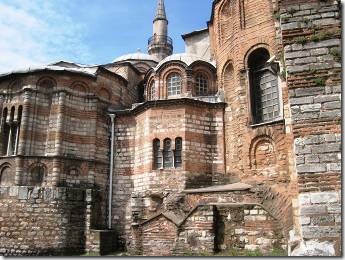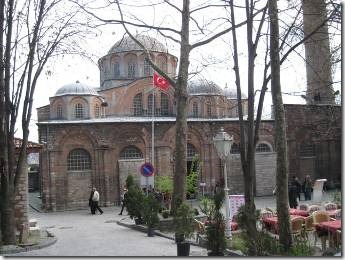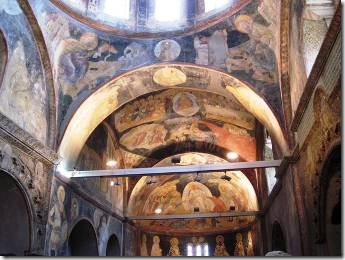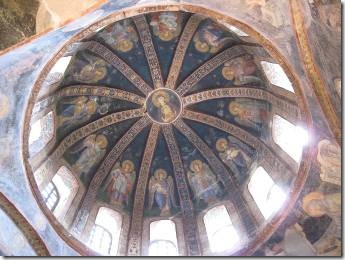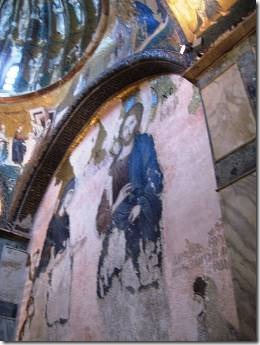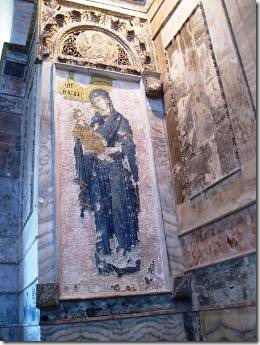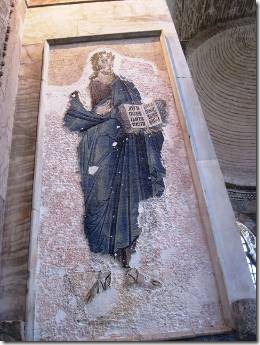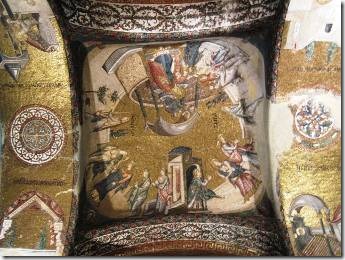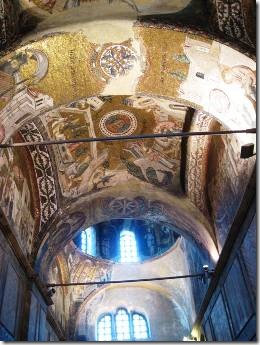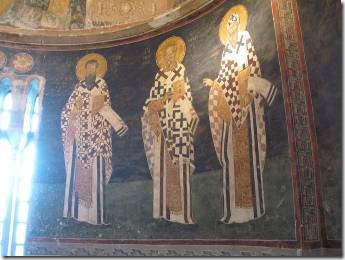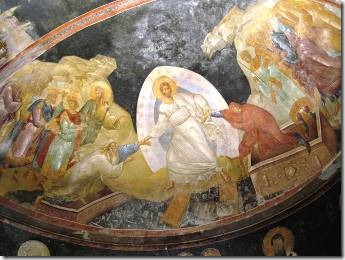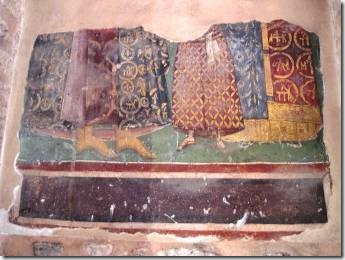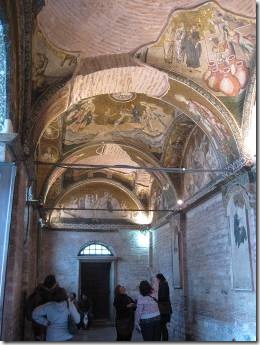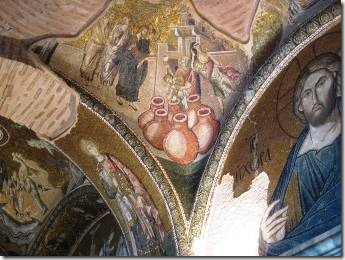Today we joined a small tour to Ephesus and it was actually astounding! Ancient Greek and Roman ruins from like 600 B.C. You couldn’t help but be amazed. The perfect weather and blue skies against the ancient stone columns, arches, statues and ruins created great photo opportunities and I took over 300 in the 3 or so hours we were there. We also visited the house that, according to legend more than history, Jesus’s mother Mary lived in and where she died. Lunch was a wonderful meal hosted by a Turkish carpet outlet. We finished the day with a stop at the Ephesus Museum and a leather outlet. Our guide appologized for making us deal with the sales pitches but he was mandated to do it by his travel agency. He was a wonderful guide, knowledgeable and he spoke excellent English. It cost a bunch of money but it was worth it. Randal and I will stay in Ismir tomorrow and see the city itself. Then we will move on down the cost making our way to Marmaris. Doramac will supposedly arrive April 28th rather than the first week in May so we have less time to dawdle than we thought.
But this email takes us back to Istanbul and the Chora Church.
Ru
DoraMac
ps In Istanbul I threw a coin in the wishing waters of the Basicilica Cistern and the Sox won! At Mary’s house there was a wishing wall where you tied a cloth to make a wish and I did that too. I also lit some candles for them. So I’ve done my part. Keep going Sox!
Kariye Camii (Chora Church) http://www.choramuseum.com/
I wanted to see Chora Church tempted by the writers of all of the travel journals I’d read. Ann Monk Kidd’s Traveling with Pomegranates was the most influential because so far I’ve liked her book the best. Randal and I took a tram and a bus helped along our way by tram and bus workers who always take the time to help and don’t just point if you truly look confused. From the bus we followed signs to what is now the Kariye Museum. The church’s name Kariye Camii means “out in the country” because when the original structure was built (sometime between the 11th and 14th centuries,) it was outside the city walls. There’s so much to say about this place that I’m not especially since I can’t possibly explain it as well as its own website can. But my favorite part of the story is this…”The church was rebuilt and decorated in the 14th century under the supervision of Theodore Metochites, an art lover, statesman and scholar who was a close friend and advisor of Emperor Andronicus II Palaeologus. Sadly Metochites was reduced to poverty and sent into exile when the emperor was overthrown in 1328. Metochites was allowed to return to the city in 1330 provided that he remained a monk at Chora, which he did, living out the last years of his life surrounded by the magnificent works he had commissioned.” The church was converted into a mosque in 1511, but fortunately it was not substantially altered. The mosaics were covered with wooden screens, some windows were boarded up, and minarets were added.
It would have been lovely to have spent time in this small space looking at each painting, but there were too many people and stopping and standing just put you in everyone’s way. I think the small “human scale” appeals to me more than the huge mosques or palaces. Our Tibet tour friends David and Ronnie said the same thing, that visiting smaller countries with small places was a richer experience than huge monuments in large cities.
So enjoy the photos and if you want to know more, explore their website which seems quite good.

